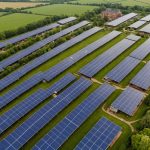Overview of UK Tax Breaks for Sustainable Property Development
Navigating the world of UK tax breaks for sustainable property development can yield significant advantages for developers. The government offers an array of key tax incentives aimed at encouraging eco-friendly practices in construction. Understanding these opportunities is crucial for property developers committed to sustainability.
Tax incentives are designed to offset costs and promote sustainable development. These include financial benefits such as capital allowances for investments in green technologies, R&D tax credits for innovations that improve energy efficiency, and business rates relief for the development of eco-friendly properties.
Also read : Top insider tips for international investors to maximize returns on uk real estate
Government policies actively promote eco-friendly opportunities within the construction sector. This stems from a broader initiative to reduce carbon footprints and create sustainable urban environments. Financial incentives are an effective tool in driving compliance and surpassing environmental standards, leading to more robust and responsible property development practices.
As sustainability continues to be a priority, developers who embrace these eco-friendly opportunities not only contribute positively to the environment but also enhance the financial viability of their projects. Awareness and understanding of these tax incentives can be paramount in aligning property development with environmental sustainability goals, ensuring developers are both eco-conscious and financially astute.
This might interest you : Key insurance factors to consider for uk properties listed as airbnb rentals
Types of Tax Incentives
Navigating the array of tax incentives available for sustainable property development can significantly bolster a developer’s financial strategy. These incentives serve to acknowledge and reward eco-friendly innovation and practices. Understanding these opportunities is crucial for developers eager to balance environmental responsibilities with economic gains.
Capital Allowances
For property developers investing in green technologies, capital allowances offer a financial reprieve. These allowances permit developers to deduct the costs associated with energy-efficient installations or renewable energy mechanisms from their taxable profits. The eligibility criteria focus on investments that demonstrate substantial environmental benefits. To apply, developers must prepare precise documentation detailing their sustainable investments, often requiring expert validation to affirm the eco-friendly nature of the projects. Successfully claiming capital allowances can drastically reduce the initial costs of transitioning to sustainable construction methods.
Research and Development (R&D) Tax Credits
Tax credits for Research and Development cater particularly to property developers pursuing sustainable innovations. These credits are designed to offset expenses associated with developing new technologies or processes that improve environmental performance. Developers can qualify by showcasing how their projects address energy efficiency, using extensive documentation and testing reports. Case studies highlight instances where developers cut operational costs and improved their environmental impact, presenting a compelling argument for engaging in R&D activities focused on sustainability.
Business Rates Relief
Business rates relief offers a notable opportunity for developers aiming to create eco-friendly properties. This relief can substantially lower overhead costs, making sustainable projects more financially viable. To qualify, properties must meet specific environmental criteria, often including certifications or assessments demonstrating reduced environmental impact. This process ensures that only genuinely sustainable developments benefit.
Developers must be vigilant about application specifics, as missteps can delay or negate relief. Ensuring the property aligns with ecological standards is paramount, as is maintaining comprehensive documentation that evidences compliance. Documentation acts as proof that development practices significantly contribute to sustainability.
The impact of business rates relief can be substantial, reducing ongoing costs and improving the overall financial outcome of the project. By alleviating some of the financial pressures associated with eco-friendly development, this relief supports the adoption of more sustainable practices within the construction industry. Understanding these requirements and strategically planning projects can be highly beneficial, highlighting the importance of integrating this knowledge early in the design phase. This foresight not only aids in achieving compliance, but can also improve the long-term financial gains of sustainable development endeavors.
Eligibility Criteria for Tax Breaks
Understanding the eligibility criteria is vital for developers aiming to secure UK tax breaks for sustainable property initiatives. Each tax break designed to encourage environmentally responsible building has distinct requirements.
General Requirements
At the core, developers must showcase that their projects align with sustainability goals. This generally involves implementing energy-efficient solutions, utilising renewable energy sources, and adhering to environmental standards.
Specific Criteria for Eco-Friendly Developments
Each tax incentive—whether it’s capital allowances, R&D tax credits, or business rates relief—requires compliance with specific guidelines. For instance, capital allowances necessitate investments in recognised green technologies. The eligibility criteria don’t just focus on usage but also on demonstrable environmental impact and improvement.
Importance of Compliance
Adhering to these developer guidelines and meeting the set environmental criteria is not merely procedural; it ensures access to fiscal advantages that can significantly bolster the financial viability of sustainable developments. Compliance also reflects the developer’s commitment to eco-friendly practices, which can enhance their reputation in the market. Thus, awareness and adherence to appropriate standards are key for successful claims and to fully leverage the intended benefits of UK tax breaks.
Application Process for Tax Breaks
Navigating the application process for tax breaks is crucial for developers aiming to leverage financial advantages in sustainable property development. A well-prepared approach ensures a higher likelihood of success.
How to Prepare for Application
Preparation begins with gathering all essential documents. This includes proof of sustainability measures, financial records, and any environmental certifications. Developing a meticulous filing system is vital for organising these materials. Common mistakes, such as incomplete documentation or ignoring eligibility specifics, can derail an application. Thus, accuracy and thoroughness can significantly influence outcomes. Consulting with professionals early can provide insights into compiling the necessary information accurately.
Timing and Deadlines
To align project timelines, attention to important deadlines is essential. Developers should synchronise their projects with tax break deadlines to avoid any lapses. Early planning should include consultations with tax advisors to navigate timeframes effectively. Being proactive can prevent missed opportunities and ensure all submissions align with statutory requirements.
Follow-Up and Appeals
After submitting an application, it’s crucial to understand the follow-up procedures. If a claim is rejected, an appeals process can be initiated. Engaging professional tax advisors can provide strategic guidance during appeals, ensuring developers receive the maximum advantages available. It’s an ongoing journey requiring diligence and a proactive stance.
Case Studies of Successful Sustainable Developments
Exploring case studies of successful sustainable property projects illustrates how developers can effectively leverage tax benefits. With a precise approach, these practical examples highlight innovative strategies and underscore the advantages of applying UK tax breaks efficiently.
One notable case involved a developer who maximized capital allowances for installing cutting-edge green technologies, significantly reducing taxable profits. By adhering strictly to eligibility criteria, the project showcased substantial eco-credentials and enjoyed reduced initial costs, emphasizing the importance of compliance and expert documentation.
Another case study demonstrated the impact of R&D tax credits for pioneering energy-efficient building materials. The developer meticulously documented the process and results, successfully offsetting development costs. This not only improved environmental impact but also strengthened financial outcomes by reducing operational expenses.
Lessons from these projects underscore the value of integrating sustainable practices from the outset. Ensuring the implementation of eco-friendly opportunities not only aligns with environmental responsibilities but also unlocks fiscal advantages. These case studies serve as benchmarks, motivating other developers to adopt similar strategies, leveraging tax incentives as a key component of sustainable development plans. Employing such practices enhances both environmental and economic viability within the property sector.







